Showing Spotlights 2097 - 2104 of 2779 in category All (newest first):
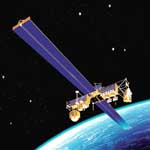 When the U.S. military talks about space superiority it defines this as the degree of control necessary to employ, maneuver, and engage space forces while denying the same capability to an adversary. Although 'space forces' has a Star Wars ring to it, the term basically refers to satellites and these satellites - at least as far as unclassified information goes - do not carry weapons (yet); although the public website of the U.S. Air Force Space Command in listing its capabilities mentions the ability to conduct defensive and offensive counterspace operations, and space environment assessments. The main functions of the military's space capabilities today are information related - weather, communications, surveillance, reconnaissance, navigation and missile warning capabilities - and has become critical to many military operations. As other military powers build up their space programs, defensive and offensive space capabilities become more of an issue for war planers - something they call counterspace activities.
When the U.S. military talks about space superiority it defines this as the degree of control necessary to employ, maneuver, and engage space forces while denying the same capability to an adversary. Although 'space forces' has a Star Wars ring to it, the term basically refers to satellites and these satellites - at least as far as unclassified information goes - do not carry weapons (yet); although the public website of the U.S. Air Force Space Command in listing its capabilities mentions the ability to conduct defensive and offensive counterspace operations, and space environment assessments. The main functions of the military's space capabilities today are information related - weather, communications, surveillance, reconnaissance, navigation and missile warning capabilities - and has become critical to many military operations. As other military powers build up their space programs, defensive and offensive space capabilities become more of an issue for war planers - something they call counterspace activities.
Nov 21st, 2008
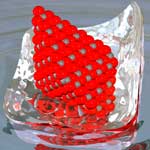 Titanium dioxide nanoparticles have become a commercially significant nanomaterial and are being used in products around the world - in cosmetics and sunscreen lotions, paint formulations, coatings, self-cleaning additives, even in antibacterial applications. The increased use of nanomaterials such as titania goes hand in hand with a growing number of reports on the risks associated with these materials, which have arisen because insufficient information has been gathered about their reactivity and stability once they leave the laboratory. Unfortunately, pinpointing every conceivable situation that nanoparticles could interact in is an enormous multi-parameter problem and solving this by experimental testing alone is not feasible due to the huge numbers of combinatorial variations. This is where theoretical predictions can help, by rapidly and systematically sampling possibilities, and highlighting where experimentalists should focus their attention.
Titanium dioxide nanoparticles have become a commercially significant nanomaterial and are being used in products around the world - in cosmetics and sunscreen lotions, paint formulations, coatings, self-cleaning additives, even in antibacterial applications. The increased use of nanomaterials such as titania goes hand in hand with a growing number of reports on the risks associated with these materials, which have arisen because insufficient information has been gathered about their reactivity and stability once they leave the laboratory. Unfortunately, pinpointing every conceivable situation that nanoparticles could interact in is an enormous multi-parameter problem and solving this by experimental testing alone is not feasible due to the huge numbers of combinatorial variations. This is where theoretical predictions can help, by rapidly and systematically sampling possibilities, and highlighting where experimentalists should focus their attention.
Nov 19th, 2008
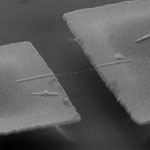 Shrinking device size to nanometer dimensions presents many fascinating opportunities such as manipulating nano objects with nanotools, measuring mass in attogram ranges, sensing forces at femtonewton scales, and inducing gigahertz motion, among other new possibilities waiting to be discovered. The two principal components common to most electromechanical systems irrespective of scale are a mechanical element and transducers. The mechanical element either deflects or vibrates in response to an applied force. Depending on their type, the mechanical elements can be used to sense static or time-varying forces. The transducers in microelectromechanical systems (MEMS) and nanoelectromechanical systems (NEMS) convert mechanical energy into electrical or optical signals and vice versa. A Spanish team has now demonstrated an ultrasensitive carbon nanotube based mass sensor in which they measured chromium atoms with a mass resolution of only 1.4 zeptograms.
Shrinking device size to nanometer dimensions presents many fascinating opportunities such as manipulating nano objects with nanotools, measuring mass in attogram ranges, sensing forces at femtonewton scales, and inducing gigahertz motion, among other new possibilities waiting to be discovered. The two principal components common to most electromechanical systems irrespective of scale are a mechanical element and transducers. The mechanical element either deflects or vibrates in response to an applied force. Depending on their type, the mechanical elements can be used to sense static or time-varying forces. The transducers in microelectromechanical systems (MEMS) and nanoelectromechanical systems (NEMS) convert mechanical energy into electrical or optical signals and vice versa. A Spanish team has now demonstrated an ultrasensitive carbon nanotube based mass sensor in which they measured chromium atoms with a mass resolution of only 1.4 zeptograms.
Nov 18th, 2008
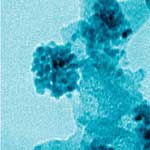 Adding yet another twist to the emerging debate about the potential risks of nanomaterials, researchers have demonstrated how difficult it is to map out the health effects of nanoparticles. They have shown that, even if a certain nanoparticle does not appear toxic by itself, the interaction between this nanoparticle and other common compounds in the human body may cause serious problems to cell functions. On one hand, this effect could be used to great advantage in nanomedicine for killing cancer cells. On the other hand, unfortunately, it is unknown at present whether the same effect could be observed with healthy cells as well. Since the number of possible combinations of nanoparticles and various biomolecules is immense, it is practically impossible to research them systematically. This latest example of the risk-benefit dichotomy of nanotechnology just shows how thin the line is between promising applications such as effective cancer killers and the unknown risks posed by unintentional effects of exactly the same applications.
Adding yet another twist to the emerging debate about the potential risks of nanomaterials, researchers have demonstrated how difficult it is to map out the health effects of nanoparticles. They have shown that, even if a certain nanoparticle does not appear toxic by itself, the interaction between this nanoparticle and other common compounds in the human body may cause serious problems to cell functions. On one hand, this effect could be used to great advantage in nanomedicine for killing cancer cells. On the other hand, unfortunately, it is unknown at present whether the same effect could be observed with healthy cells as well. Since the number of possible combinations of nanoparticles and various biomolecules is immense, it is practically impossible to research them systematically. This latest example of the risk-benefit dichotomy of nanotechnology just shows how thin the line is between promising applications such as effective cancer killers and the unknown risks posed by unintentional effects of exactly the same applications.
Nov 17th, 2008
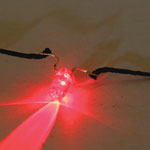 If current research is an indicator, wearable electronics will go far beyond just very small electronic devices or wearable, flexible computers. Not only will these devices be embedded in textile substrates but an electronics device or system could ultimately become the fabric itself. Electronic textiles (e-textiles) will allow the design and production of a new generation of garments with distributed sensors and electronic functions. Such e-textiles will have the revolutionary ability to sense, act, store, emit, and move - think biomedical monitoring functions or new man-machine interfaces - while ideally leveraging an existing low-cost textile manufacturing infrastructure. A recent research report proposes to make conductive, carbon nanotube-modified cotton yarn. This would offer a uniquely simple yet remarkably functional solution for smart textiles - close in feel and handling to normal fabric - yet with many parameters exceeding existing solutions.
If current research is an indicator, wearable electronics will go far beyond just very small electronic devices or wearable, flexible computers. Not only will these devices be embedded in textile substrates but an electronics device or system could ultimately become the fabric itself. Electronic textiles (e-textiles) will allow the design and production of a new generation of garments with distributed sensors and electronic functions. Such e-textiles will have the revolutionary ability to sense, act, store, emit, and move - think biomedical monitoring functions or new man-machine interfaces - while ideally leveraging an existing low-cost textile manufacturing infrastructure. A recent research report proposes to make conductive, carbon nanotube-modified cotton yarn. This would offer a uniquely simple yet remarkably functional solution for smart textiles - close in feel and handling to normal fabric - yet with many parameters exceeding existing solutions.
Nov 14th, 2008
 Europe is a key player in nanotechnology. The European Commission alone, not counting the investments made by individual countries, in 2007 has invested some $720 million into European nanotechnology projects. In contrast to the U.S., much of the science and technology policy in Europe is guided by the Precautionary Principle, although critics argue that this contributes to the high level of bureaucracy and red tape that prevents European companies from speedily translating the continent's leading-edge nanotechnology research into commercial products. Activities concerning the research on environmental, health and safety (EHS) aspects of nanotechnology deal with potential risk issues and are aimed at decreasing uncertainty about potential risks and benefits on the basis of scientific knowledge, for instance research on the toxicity of nanomaterials and manufactured nanoparticles. Since developments in science and technology do not take place independently from society, European policy makers see it as important to support a dialogue on benefits and risks of nanotechnology, including ethical, legal, societal aspects (ELSA) and governance, involving great parts of the public and basing on informed judgment.
Europe is a key player in nanotechnology. The European Commission alone, not counting the investments made by individual countries, in 2007 has invested some $720 million into European nanotechnology projects. In contrast to the U.S., much of the science and technology policy in Europe is guided by the Precautionary Principle, although critics argue that this contributes to the high level of bureaucracy and red tape that prevents European companies from speedily translating the continent's leading-edge nanotechnology research into commercial products. Activities concerning the research on environmental, health and safety (EHS) aspects of nanotechnology deal with potential risk issues and are aimed at decreasing uncertainty about potential risks and benefits on the basis of scientific knowledge, for instance research on the toxicity of nanomaterials and manufactured nanoparticles. Since developments in science and technology do not take place independently from society, European policy makers see it as important to support a dialogue on benefits and risks of nanotechnology, including ethical, legal, societal aspects (ELSA) and governance, involving great parts of the public and basing on informed judgment.
Nov 13th, 2008
 Quantum dots are emerging as an important class of nanoparticles with applications ranging from medicine to energy. These nanocrystals possess size tunable optical and electronic properties resulting from quantum confinement which allow them to be suitable candidates for applications in solar cells and light emitting devices. For instance, quantum dots have been identified as important light harvesting material for building highly efficient solar cells - when exposed to light at certain wavelengths they can generate free electrons and create an electrical current. Having a high resistance to photobleaching, quantum dots (QDs) also are attractive materials for optoelectronics and in vivo biosensing. Researchers have now demonstrated that QDs, in addition to being excellent fluorescent probes, can be used as photoacoustic (which combines the advantages of optical absorption contrast with ultrasonic spatial resolution for deep imaging) and photothermal contrast agents and sensitizers, thereby providing an opportunity for multimodal high resolution photoacoustic/photothermal-fluorescent imaging as well as sensitizers in nanotherapeutic applications.
Quantum dots are emerging as an important class of nanoparticles with applications ranging from medicine to energy. These nanocrystals possess size tunable optical and electronic properties resulting from quantum confinement which allow them to be suitable candidates for applications in solar cells and light emitting devices. For instance, quantum dots have been identified as important light harvesting material for building highly efficient solar cells - when exposed to light at certain wavelengths they can generate free electrons and create an electrical current. Having a high resistance to photobleaching, quantum dots (QDs) also are attractive materials for optoelectronics and in vivo biosensing. Researchers have now demonstrated that QDs, in addition to being excellent fluorescent probes, can be used as photoacoustic (which combines the advantages of optical absorption contrast with ultrasonic spatial resolution for deep imaging) and photothermal contrast agents and sensitizers, thereby providing an opportunity for multimodal high resolution photoacoustic/photothermal-fluorescent imaging as well as sensitizers in nanotherapeutic applications.
Nov 12th, 2008
 As we have show before, nanotechnology applications could provide decisive technological breakthroughs in the energy sector and have a considerable impact on creating the sustainable energy supply that is required to make the transition from fossil fuels. Although we love to write about all the clean and green applications that will be nanotechnology enabled, the harsh reality is that dirty energy is still fuelling our way of life. No matter if you are a member of the "drill, baby, drill" crowd or if you are actively involved in saving energy and think that the development of renewable energies can't come fast enough, we have to live with the fact that the world's energy production will continue to depend on oil, gas and coal for quite a few more years. But even here, nanotechnology applications might offer some improvements. A new report shows that nanotechnology, in the form of carbon nanotube rubber composites, could help to significantly enhance oil production efficiency by allowing to probe and drill deeper wells.
As we have show before, nanotechnology applications could provide decisive technological breakthroughs in the energy sector and have a considerable impact on creating the sustainable energy supply that is required to make the transition from fossil fuels. Although we love to write about all the clean and green applications that will be nanotechnology enabled, the harsh reality is that dirty energy is still fuelling our way of life. No matter if you are a member of the "drill, baby, drill" crowd or if you are actively involved in saving energy and think that the development of renewable energies can't come fast enough, we have to live with the fact that the world's energy production will continue to depend on oil, gas and coal for quite a few more years. But even here, nanotechnology applications might offer some improvements. A new report shows that nanotechnology, in the form of carbon nanotube rubber composites, could help to significantly enhance oil production efficiency by allowing to probe and drill deeper wells.
Nov 11th, 2008
 When the U.S. military talks about space superiority it defines this as the degree of control necessary to employ, maneuver, and engage space forces while denying the same capability to an adversary. Although 'space forces' has a Star Wars ring to it, the term basically refers to satellites and these satellites - at least as far as unclassified information goes - do not carry weapons (yet); although the public website of the U.S. Air Force Space Command in listing its capabilities mentions the ability to conduct defensive and offensive counterspace operations, and space environment assessments. The main functions of the military's space capabilities today are information related - weather, communications, surveillance, reconnaissance, navigation and missile warning capabilities - and has become critical to many military operations. As other military powers build up their space programs, defensive and offensive space capabilities become more of an issue for war planers - something they call counterspace activities.
When the U.S. military talks about space superiority it defines this as the degree of control necessary to employ, maneuver, and engage space forces while denying the same capability to an adversary. Although 'space forces' has a Star Wars ring to it, the term basically refers to satellites and these satellites - at least as far as unclassified information goes - do not carry weapons (yet); although the public website of the U.S. Air Force Space Command in listing its capabilities mentions the ability to conduct defensive and offensive counterspace operations, and space environment assessments. The main functions of the military's space capabilities today are information related - weather, communications, surveillance, reconnaissance, navigation and missile warning capabilities - and has become critical to many military operations. As other military powers build up their space programs, defensive and offensive space capabilities become more of an issue for war planers - something they call counterspace activities.
 Subscribe to our Nanotechnology Spotlight feed
Subscribe to our Nanotechnology Spotlight feed





